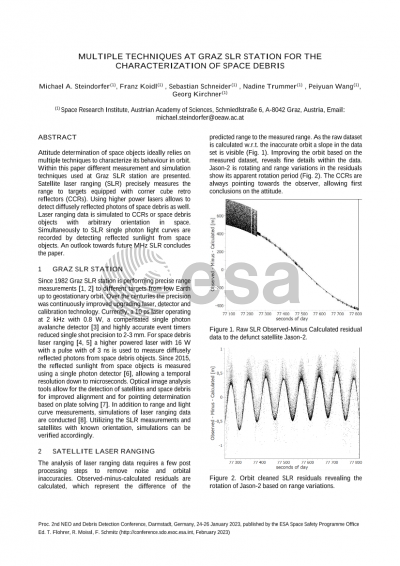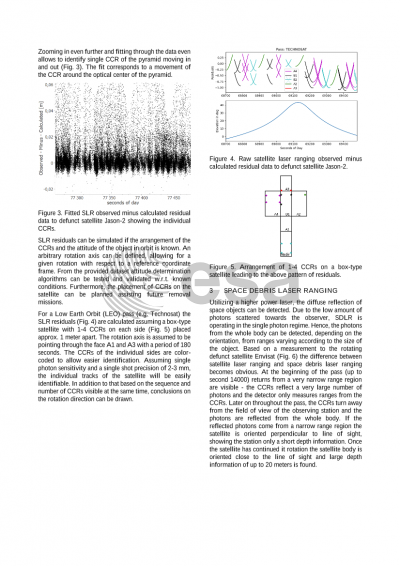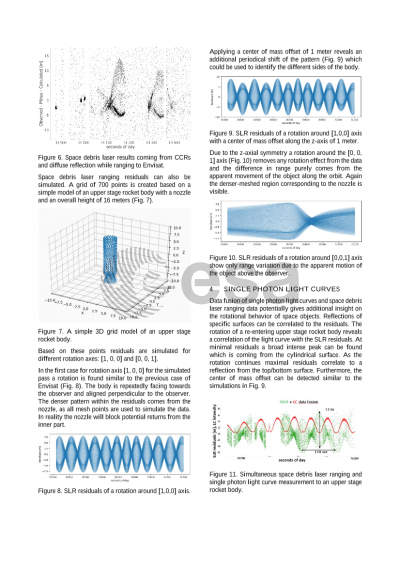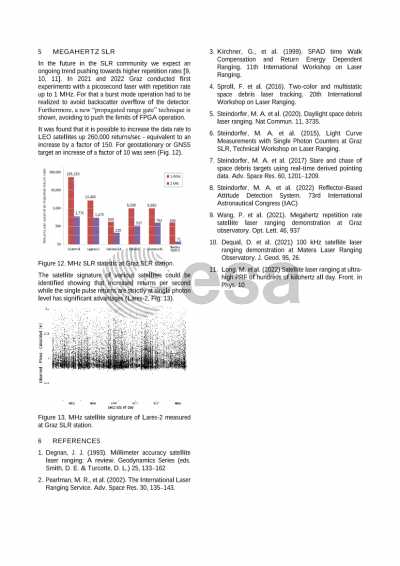Document details

Abstract
Attitude determination of space objects ideally relies on multiple techniques to characterize its behavior in orbit. In this talk Graz SLR station’s capability to contribute to data fusion is summarized. Satellite laser ranging precisely measures the range to satellite or rocket bodies, equipped with retro reflectors. The increase in repetition rate to 2 kHz while operating in the single photon regime, together the high precision of the Graz laser ranging station, reveals individual retroreflectors (the satellite signature). Knowing the alignment of the retro reflectors along the body allows to simulate residuals and correlate the simulations with the measured data. Simulated laser ranging residuals are validated with measurements to satellites with known orientations with respect to a reference coordinate frame. Range measurements to space objects without retro reflectors can still be measured with higher powered lasers, revealing details of the shape of the object. With higher computational effort space debris laser ranging residuals of e.g. rocket bodies could be simulated as well. During the tracking of space debris real time image analysis techniques are used to detect and center sun-illuminated objects in the field of view during day and night, while displaying the detected time bias within the software. Keeping the telescope in a fixed position and searching for moving targets allows to perform plate solving against the stellar background for accurate position determination. As laser ranging only relies on specific wavelengths, the rest of the gathered light (reflected sunlight by satellite surfaces) of the telescope is used for recording light curves based on single photon detectors with temporal resolutions down to microseconds. The talk will conclude with an outlook on future technologies currently developed in Graz and their potential implications on space debris laser ranging.
Preview





